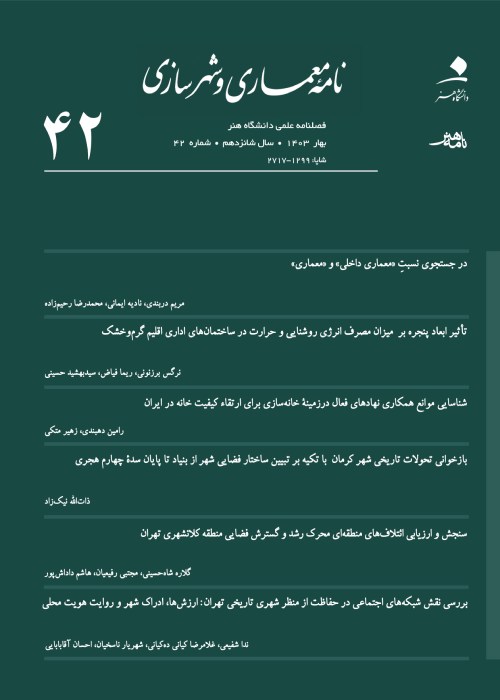The Methodology for Understanding Architecture based on Several Kinds of Related Bodies of Knowledge towards Realization of the Contemporary Architecture of Iran Case Studies: 87 Historical Houses in
Abstract:
This paper tries to evaluate the kinds of methodology needed for understanding architecture. Architecture is a field of study that brings together both physical elements such as earth, soil, water, sun, as well as nonphysical concepts, including those of public and private spaces; all of which are necessary for the provision of the social and psychological needs of individuals within particular society. Architecture is, further, a phenomenon that employs multiple methodological approaches and incorporates various areas of knowledge. This paper attempts to demonstrate that three areas of knowledge necessary for understanding architecture in general and Iranian architecture in particular, include: Typology, Anthropology and Semiology. We believe that knowledge is an ongoing process and any appreciation of local architecture requires careful attention to this dynamic aspect of knowledge as process. In order to incorporate multiple areas of knowledge and data, we have conceptualized a methodological technique called “knowledge biofeedback,” by which we mean observation, documentation, analysis, and developing questions. Questions arrived at on the basis on such methods are then fed back into further observation, documentation, discussion, and analysis. This technique has allowed us to not only have keener observations and to “see” what we may have missed earlier, but also to achieve well-rounded appreciation of diverse Iranian vernacular architecture and cultures. In most of the recent Ph.D. and MA theses, researchers claim to have based their methodology on either fieldwork or on library research. In our view, the problem with such “methodological” approaches is that often the “tools and techniques” of methodology have been substituted for the knowledge required to understanding socio-cultural phenomena. In the present paper, we have conducted extensive literature review of published books and articles, and from them we have selected seven areas to incorporate in our discussion and analysis of diverse Iranian architecture. These include archeology, art history, mythology, mysticism, anthropology, Persian literature and geography. Our discussion and analysis is based on our extensive field research and surveys of 87 historical houses from six cities in Iran in different regions of the country. These cities include Bushehr, Hamedan, Kashan, Kerman, Rasht, and Shiraz. In these field studies, as demonstrated in this paper, we have consistently tried to incorporate the three areas of knowledge by employing the methodological techniques mentioned above to contemporize the indigenous knowledge regarding what they mean by Iranian architecture. In this paper we hope to provide a more nuanced appreciation and deeper understanding of the diversity of Iranian architecture.
Keywords:
Language:
Persian
Published:
Journal of Architecture and Urban Planning, Volume:6 Issue: 12, 2014
Page:
117
magiran.com/p1248297
دانلود و مطالعه متن این مقاله با یکی از روشهای زیر امکان پذیر است:
اشتراک شخصی
با عضویت و پرداخت آنلاین حق اشتراک یکساله به مبلغ 1,390,000ريال میتوانید 70 عنوان مطلب دانلود کنید!
اشتراک سازمانی
به کتابخانه دانشگاه یا محل کار خود پیشنهاد کنید تا اشتراک سازمانی این پایگاه را برای دسترسی نامحدود همه کاربران به متن مطالب تهیه نمایند!
توجه!
- حق عضویت دریافتی صرف حمایت از نشریات عضو و نگهداری، تکمیل و توسعه مگیران میشود.
- پرداخت حق اشتراک و دانلود مقالات اجازه بازنشر آن در سایر رسانههای چاپی و دیجیتال را به کاربر نمیدهد.
In order to view content subscription is required
Personal subscription
Subscribe magiran.com for 70 € euros via PayPal and download 70 articles during a year.
Organization subscription
Please contact us to subscribe your university or library for unlimited access!


